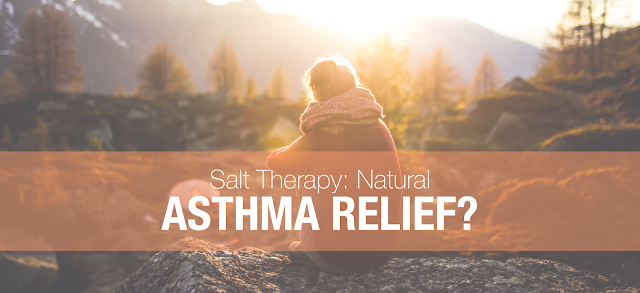Ragweed and Allergies - Halotherapy Can Help!
Millions of people are affected by seasonal allergic rhinitis, also known as hay fever. Symptoms can include sneezing, nasal congestion, runny nose, headaches, and itchy eyes, nose and throat. The most common trigger for hay fever is ragweed pollen, which is released from late July or early August through mid October.

Ragweed is a flowering plant from the daisy family that is found all over the world. It is everywhere in the U.S. but it is most common in the East and in the Midwest. There are many different species of ragweed and it can grow just about anywhere, including vacant lots or on the side of the road. Each plant only lives for one season, but it can produce up to one billion pollen grains. The pollen is very light and tiny, like powder, so the wind can carry it very far...up to 125 miles on a windy day!
Most people who are allergic to other types of pollen are also allergic to ragweed, because when a person is allergic to one type of pollen, they tend to develop more allergies to other types of pollen. Ragweed and mold are usually at their peak at the same time of year, so this can make things especially difficult for people who are allergic to both mold and ragweed, or other pollen.

- Ragweed can remove lead from contaminated soil.
- Sheep, horses and cows like to eat ragweed. This can change the taste of their milk because of he bitter substances in the ragweed leaves.
- In the past, ragweed leaves were used to prevent bleeding and to bring down swelling of the mucous membranes.
Are you really feeling the effects of ragweed (hay fever) this season? Keep your allergies in check by attending a salt therapy session or two to keep your head out of the fog the rest of the summer!
_________________________________

Ragweed is a flowering plant from the daisy family that is found all over the world. It is everywhere in the U.S. but it is most common in the East and in the Midwest. There are many different species of ragweed and it can grow just about anywhere, including vacant lots or on the side of the road. Each plant only lives for one season, but it can produce up to one billion pollen grains. The pollen is very light and tiny, like powder, so the wind can carry it very far...up to 125 miles on a windy day!
Most people who are allergic to other types of pollen are also allergic to ragweed, because when a person is allergic to one type of pollen, they tend to develop more allergies to other types of pollen. Ragweed and mold are usually at their peak at the same time of year, so this can make things especially difficult for people who are allergic to both mold and ragweed, or other pollen.

Other Facts About Ragweed:
- Native Americans used ragweed to make ropes, and as a food source before maize.- Ragweed can remove lead from contaminated soil.
- Sheep, horses and cows like to eat ragweed. This can change the taste of their milk because of he bitter substances in the ragweed leaves.
- In the past, ragweed leaves were used to prevent bleeding and to bring down swelling of the mucous membranes.
Are you really feeling the effects of ragweed (hay fever) this season? Keep your allergies in check by attending a salt therapy session or two to keep your head out of the fog the rest of the summer!
_________________________________


Comments
Post a Comment